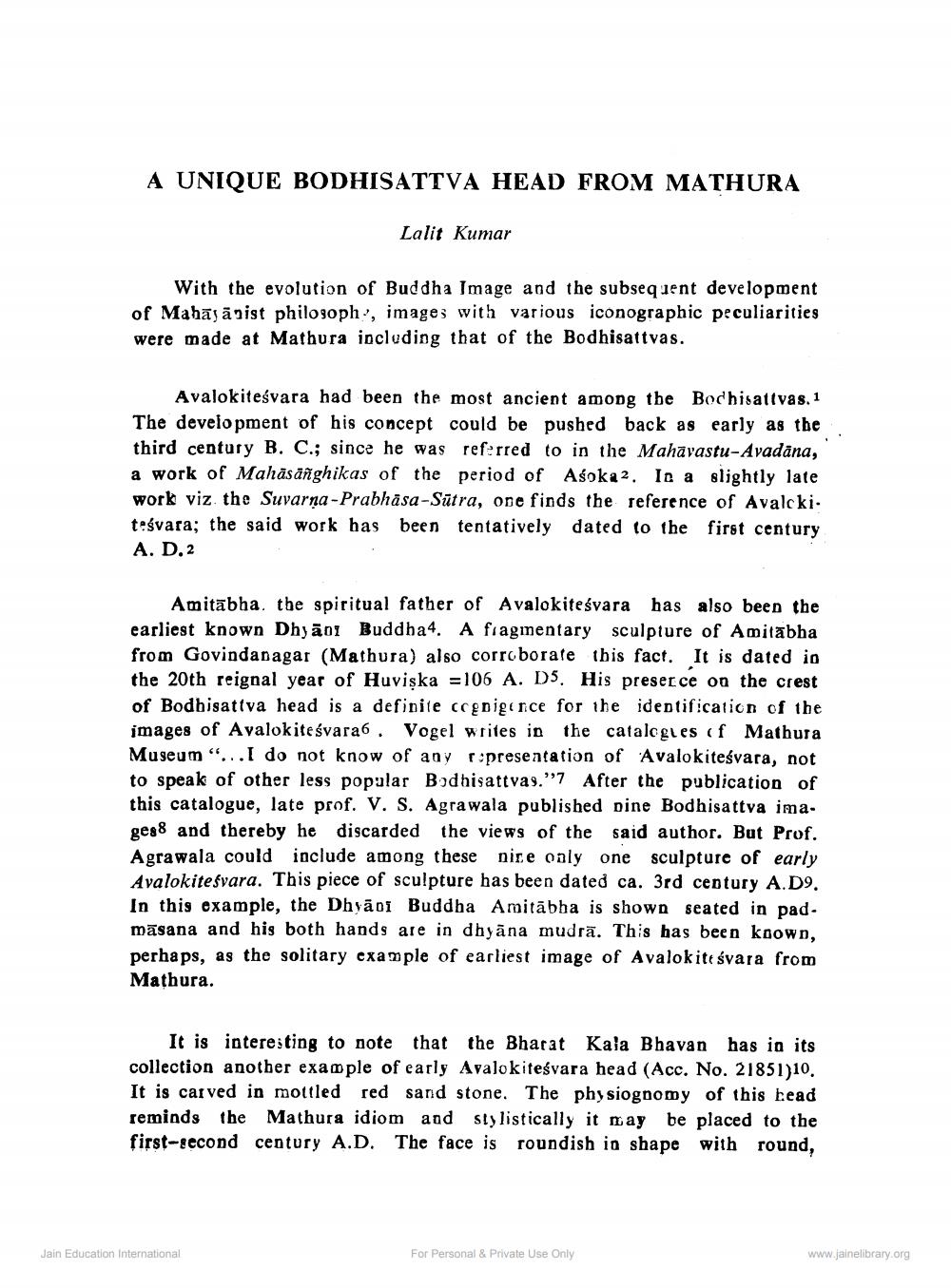________________
A UNIQUE BODHISATTVA HEAD FROM MATHURA
Lalit Kumar
With the evolution of Buddha Image and the subsequent development of Mahāyānist philosoph', images with various iconographic peculiarities were made at Mathura including that of the Bodhisattvas.
Avalokitesvara had been the most ancient among the Bodhisattvas. 1 The development of his concept could be pushed back as early as the third century B. C.; since he was referred to in the Mahavastu-Avadana, a work of Mahāsāñghikas of the period of Asoka2. Io a slightly late work viz the Suvarna-Prabhāsa-Sūtra, one finds the reference of Avalcki. tośvara; the said work has been tentatively dated to the first century A. D.2
Amitābha. the spiritual father of Avalokitesvara has also been the earliest known Dhyāni Buddha4. A fragmentary sculpture of Amitabha from Govindanagar (Mathura) also corroborate this fact. It is dated in the 20th reignal year of Huviska = 106 A. D5. His presence on the crest of Bodhisattva head is a definite cogpigence for the identification of the images of Avalokitesvara6. Vogel writes in the catalogues of Mathura Museum“...I do not know of any representation of Avalokitesvara, not to speak of other less popalar Bodhisattvas."7 After the publication of this catalogue, late prof. V. S. Agrawala published pine Bodhisattva ima. ges8 and thereby he discarded the views of the said author. But Prof. Agrawala could include among these nice only one sculpture of early Avalokitesvara. This piece of sculpture has been dated ca. 3rd century A.D9. In this example, the Dhyoi Buddha Amitābha is shown seated in pad. māsana and his both hands are in dhyāna mudrā. This has been koown, perhaps, as the solitary example of earliest image of Avalokitesvara from Mathura.
It is interesting to note that the Bharat Kala Bhavan has in its collection another example of early Avalokitesvara head (Acc. No. 21851)10. It is carved in mottled red sand stone. The physiognomy of this bead reminds the Mathura idiom and stylistically it may be placed to the first-second century A.D. The face is roundish in shape with round,
Jain Education International
For Personal & Private Use Only
www.jainelibrary.org




